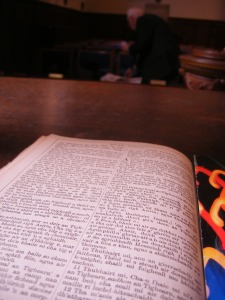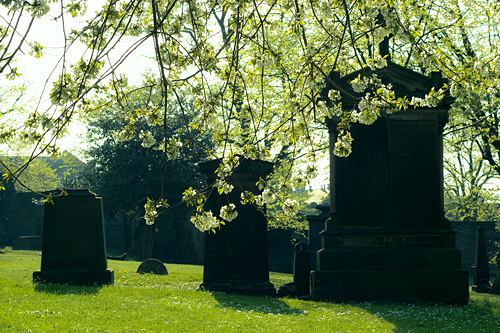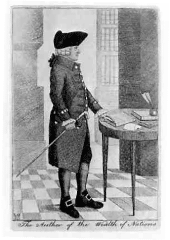‘The Lord does not see as mortals see; they look on the outward appearance, but the Lord looks on the heart’. 1 Samuel 16:7
These words are the prelude to the strange choice of David, the shepherd lad, who turns out to be the one to lead Israel. And what a leader he turns out to be. David might not be everybody’s cup of tea. He was a man of suspect morals even though the Lord’s favour was upon him. But he is also supposed to have written many of the psalms that still comfort and inspire people today and he is one of history’s greatest characters. When Samuel comes calling on the household of Jesse to find a new king to replace the discredited Saul, David, the youngest son, is not deemed a likely enough candidate even to appear on the shortlist. He is left out in the fields to attend to the sheep whilst Samuel passes before David’s brothers waiting for the spiritual nudge that will lead him to the one he is sure God wants him to anoint as king. This story is an archetype. Like so many key moments in the Biblical narrative a universal truth is revealed in a particular situation. This is a moment when we see the truth that God’s ways are not as our ways. We are reminded that however we might take the world, the chances are that the Divine nature has a different take on it. The God whom this story reveals is a God of surprises. Just when we thought we knew and we understood and ‘had Him sussed’, we are taken to new places, surprising insights and different perspectives. This is why a life of true and genuine faith could never be described as dull, predictable or settled; there is always newness around the corner, something deeper to grasp, something lying beyond our preconceived ideas and settled certitudes. When Jesus points out the mustard seed, he is saying much the same thing. Who would have believed that this tiny seed could produce this great shrub in which many birds find shelter from the midday sun and a place to make their nest? Prepare to be surprised! So often, our idea of God is the end product of our human seeking, as someone put it, ‘a stupendous construction of human thought’. For this reason I have always felt that we should be sparing, reluctant even, in our use of the divine name. The Hebrews after all did not utter the divine name at all, instead they used the term ‘yahweh’ which means, ‘I am who I am’. Edwin Muir once described the word ‘God’ in the mouth of a stern Calvinist
preacher as ‘three angry letters in a book’ See there king Calvin with his iron pen, And God three angry letters in a book, And there the logical hook On which the mystery is impaled and bent Into an ideological instrument. (The Incarnate One; from the Collected Poems of Edwin Muir, Faber & Faber 1979). We should be sparing in our use of the divine name because the more we use it the more likely it is that we end up with an idea of God created in our own image. As one of our professors told us when we were graduating, some with Master of Divinity degrees, ‘some of you have come out with this degree, Master of Divinity, but let me tell you, you will be no use as a minister until divinity masters you!’ This divine nature who takes the world differently, who constantly surprises, unsettles and undermines our comfortable certainties can only really be known in his giving of himself, in a manner of his own choosing. And this is often so quirky, so surprising and unsettling that we frequently either do not notice or refuse to believe.
RS Thomas speaks of this when he writes, As I had always known He would come, unannounced, Remarkable merely for the absence Of clamour. So truth must appear To the thinker; at a stage Of the experiment, the answer Must quietly emerge. I looked At him, not with the eye Only, but with the whole Of my being, overflowing with Him as a chalice would With the sea.
(Suddenly; from Frequencies, by RS Thomas, Macmillan 1978).
• The end of all our exploring and searching and hunting down some encounter with the divine nature is to discover that we are ultimately found, invaded, overwhelmed, mastered, wooed and overtaken by a divine initiative towards us. As Thomas put it elsewhere, we look up to heaven and have to shield our eyes from heaven’s glare and what we encounter is the ‘ubiquity of a vast concern’, so vast that no formula, no clever dogma, no orthodoxy can ever sum up or capture that elusive, fleet and subversive divine essence that is everywhere and nowhere and always at least one step ahead of our categories or doctrines. What I am trying to say is that the ways of God challenge our spiritual myopia and we should always be ready to put to one side our limited insights and be ready to be remade. So often we see without really looking, we hear without truly listening and we know without really understanding. What has brought us here today is not just our own idea, it is a divine initiative. The great American eco-theologian, Matthew Fox once described his struggle to convince urban Christians of the relevance of his creation centred spirituality. He was discussing his ideas with a New York based journalist who challenged him about his ideas. She wanted to know how people who lived in a vast city could pause to delight in the natural world and even if they could what possible relevance would that have to the life of the city. He asked the journalist to look out of the window and tell him what she saw. ‘Bricks’, was her answer, and he replied, what are bricks, just clay hoisted hundreds of feet in the air by humans, supported by frameworks of steel mined from the earth? With cars below, turning on rubber tyres made from the sap of trees, burning fuel distilled from the residue of dead plants from millions of years ago. ‘A city’ he said, ‘is an awesome place as it is, it is also the earth, recycled by humans, who themselves are earth, standing on two legs, with moveable thumbs and immense imaginations’. Only connect, only truly look and discern and you will be surprised and astonished by the miraculous every day. You will be surprised by the homeless man, who, given the chance and the encouragement can turn out to be a very skilled craftsman. You will be surprised by the person who carries all the marks of life upon them and has known loss and pain and hurt or loneliness, whom it would be so easy to dismiss or overlook, but who turns out to be just the sort of person we need to listen to because in this confused and misguided world someone like that can remind us what really matters in life. Things like love and appreciation, a sense of belonging and dignity, someone to care for us and listen to us are all have far more worth that fast cars and big bonuses. And it is so often the most unlikely people who have the most to say to us, ‘the empty handed stranger can be the bearer of the most priceless gifts’. And in the midst of our seeing and not seeing, our half remembered existence, there is this brooding divine nature, stalking the earth ready to invade, to surprise, to renew beyond our imagining or expectation. That presence is there to transform inconspicuous, unpromising things and circumstances and people, like a shepherd lad or a mustard seed into some ‘vast conclusion’. This is resurrection faith, this is the promise of newness from the horrors of Good Friday, this is the nub of the Christian message. And this is not our work or even our project. This is the work of the divine nature intruding into the life of the world. Open your eyes, look and see! Amen.
Richard Frazer






